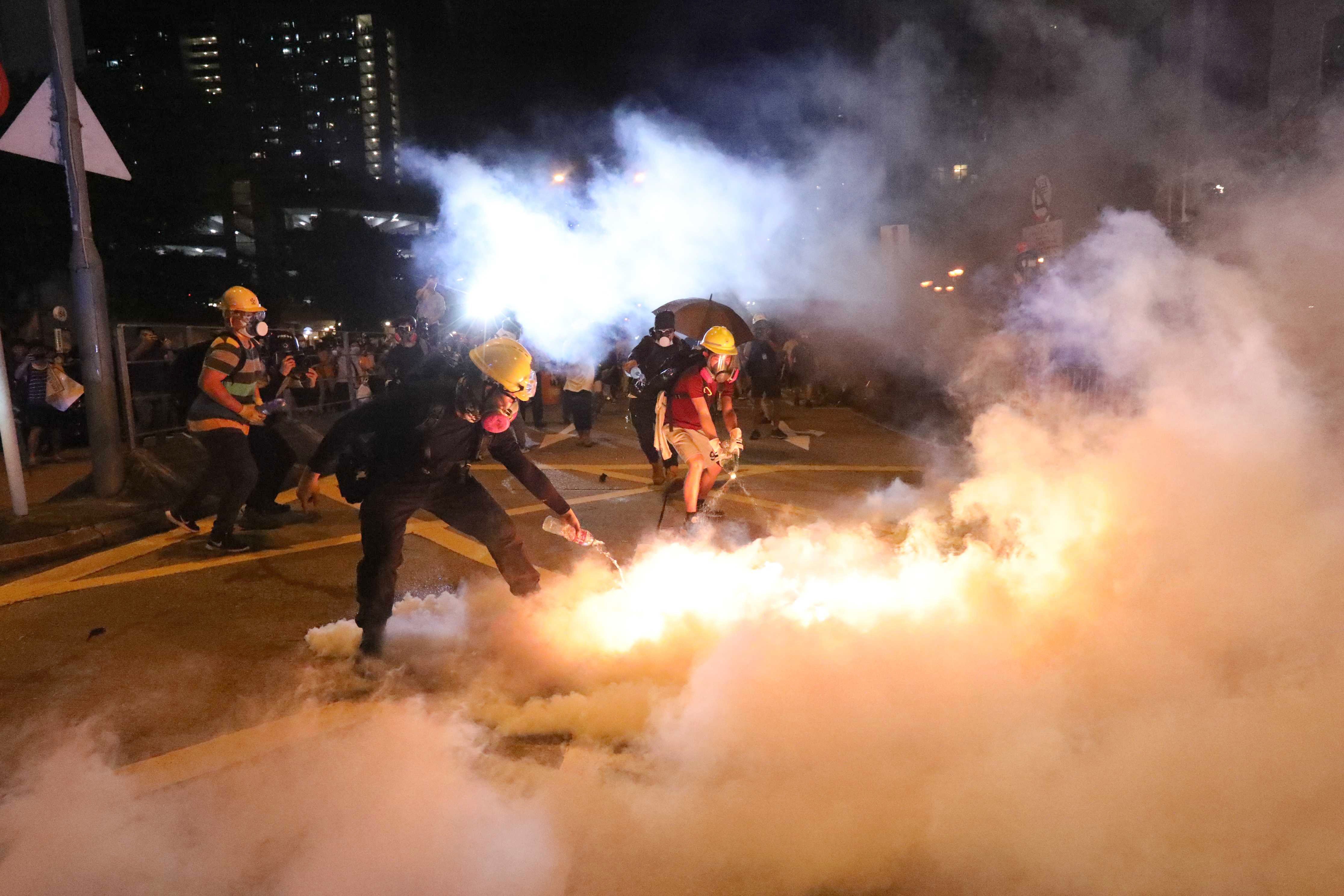
Banned worldwide in 1925, tear gas underwent an image overhaul before being embraced as an alternative to bullets. The canisters littering Hong Kong streets have been deployed indoors and in poorly ventilated areas, against suppliers’ guidance
It is a pleasant and balmy August Friday in the British Midlands, and the employees of a Derbyshire factory are in cheerful spirits as they prepare to shut down production lines. Ahead of them is a summer weekend of barbecues, family get-togethers and the start of the English Premier League football season.
Theirs is a highly agreeable spot in which to work, at the end of a winding lane, surrounded by open fields, and a few minutes’ drive from the lush nature reserve of Saint Chad’s Water, home to a rich diversity of bird life including whitethroats, willow warblers and chiffchaffs. Its rural setting aside, their nearly 100-year-old factory has been doing brisk business and offers a degree of security absent in many of today’s Brexit-hit businesses.
So when the end of a busy working week is disturbed by a phone call asking about the growing furore over how the factory’s products are being used in faraway Hong Kong, the employees could perhaps be excused for treating the inquiry with a degree of levity.
“We don’t have anyone like that,” a woman says, when asked by a Post Magazine reporter if a company spokesperson is available. There is laughter and joking in the background as she asks her colleagues what to do, and then chides someone who tells her to hang up, saying: “I’m not going to just put the phone down.”
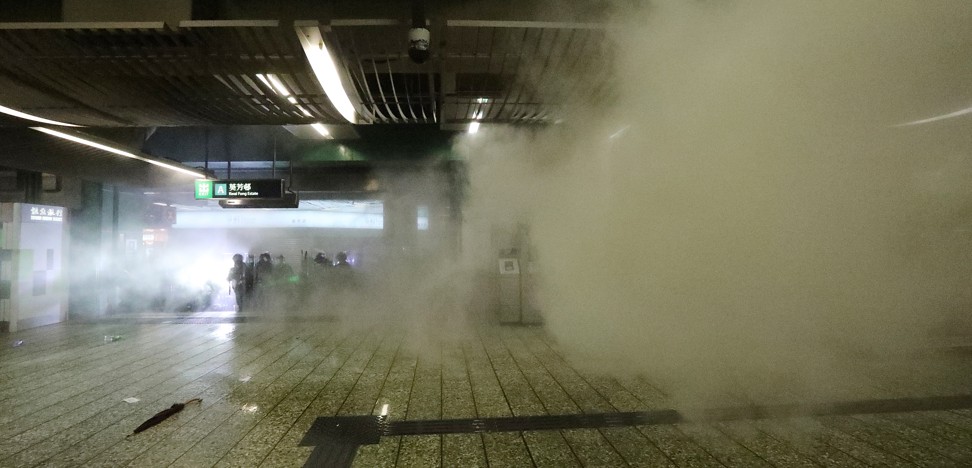
An apparently more senior colleague comes on the line: “We’re not making any comment. Thank you. Bye,” she says, before placing receiver firmly down.
Follow-up emails asking management for a more considered response go unanswered.
Two days after Post Magazine’s call – as PW Defence employees enjoyed their bucolic Sunday – Hong Kong police fired rounds of tear gas inside Kwai Fong MTR station, in what campaign groups say was a violation of police and manufacturer guidelines, which state the gas should be used only in open or well-ventilated areas.
“What makes tear gas legal to use is that protesters are always supposed to be able to get away from the smoke, and the smoke is always supposed to be able to evaporate and be ephemeral,” says Dr Anna Feigenbaum, author of the comprehensive 2017 book on the subject, Tear Gas. “The problem is that in Hong Kong, neither of those things are true. You have a situation where there are lots of cordoned-off streets, there are barricades, and there are narrow roads that have been blocked by police lines.
Firing tear gas in an enclosed location like an MTR station is highly dangerous. It can make the tear gas more potent because there is less air and fewer escape routesDr Anna Feigenbaum, author of the book, Tear Gas
“Firing tear gas in an enclosed location like an MTR station is highly dangerous. It can make the tear gas more potent because there is less air and fewer escape routes. This can lead to more severe health effects, as well as trampling, stampeding and other confined-space injuries.”
It may be half a world away, but the lucrative business being done by the Derbyshire factory – and the questionable image its industry relentlessly promotes, of tear gas as a harmless and effective means of crowd control – is inextricably linked with the wretched scenes now being played out on an almost daily basis in Hong Kong.
According to Feigenbaum, a senior lecturer at Britain’s Bournemouth University, despite hundreds of reported deaths from its effects over the decades – as well as injuries ranging from burns and brain damage to respiratory ailments and miscarriages – there is no legal obligation in any country to record the number of deaths or injuries attributed to tear gas.
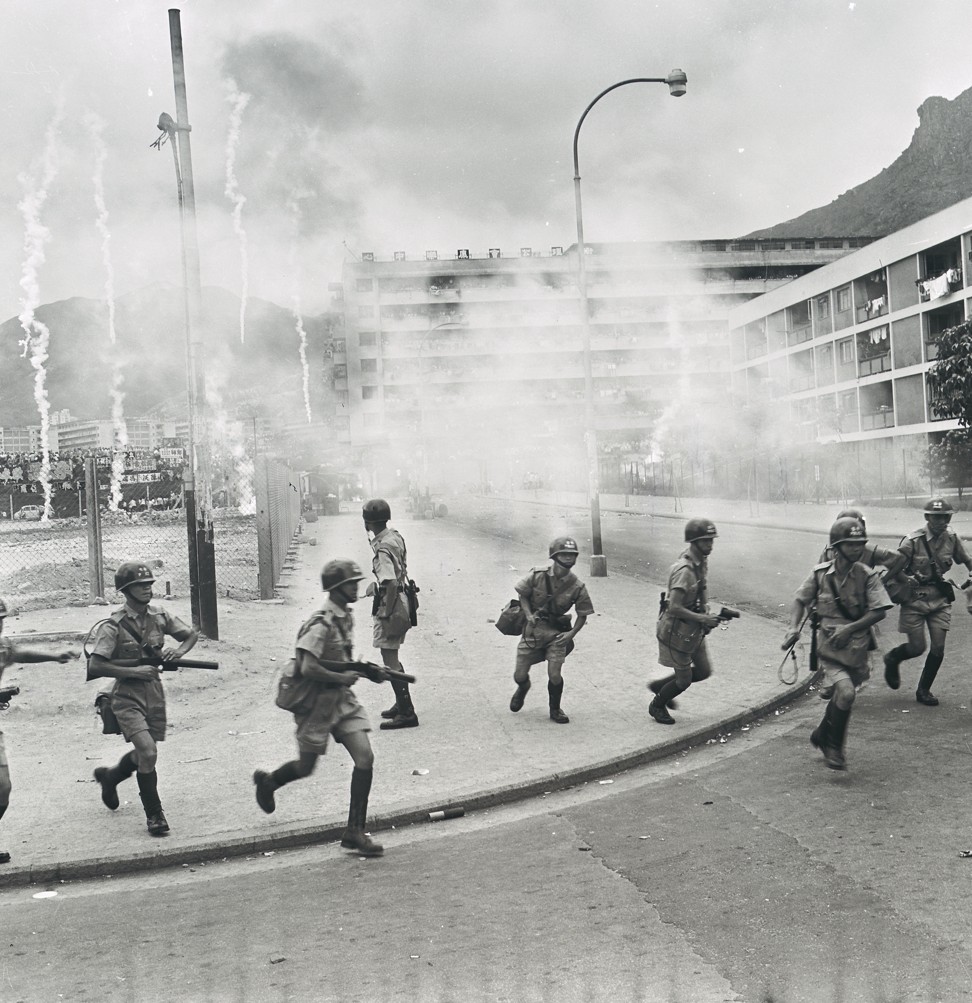
Ironically, tear gas was championed by officials and businessmen from Hong Kong’s former colonial administrators in Britain. Initially it was used to contain uprisings in colonies, and later as a money-spinning export to overseas forces including a number of highly repressive regimes in the Middle East, Africa and Asia, making tear gas the most widely used “non-lethal weapon” by police forces around the world.
In an era of rising global social unrest and hard-line stances by increasingly authoritarian governments and regimes, the outlook for companies such as PW Defence is bright, with no need to account for the way their products are put to use as part of an estimated US$1.63 billion global industry.
Hong Kong’s gas-choked summer of turmoil is the latest chapter in a century-long story of commercial exploitation of a surprisingly poorly understood weapon.
The first recorded use of tear gas was when grenades filled with methylbenzyl bromide were fired by French troops into German trenches in August 1914. That was followed by a series of horrific exchanges of lethal gases between Allied and German troops throughout World War I, chillingly evoked in the “froth-corrupted lungs” of a dying man in Wilfred Owen’s 1920 poem Dulce et Decorum Est. Tear gas was banned in warfare under the Five Powers Treaty of 1922, before the 1925 Geneva Protocol banned all use of chemical weapons.

And yet just as the world turned its back on weaponised gas, what followed was what Feigenbaum describes as “a golden age of tear gas” in the 1920s, when US military officials and arms suppliers launched a PR campaign to promote tear gas in civilian settings, transforming its image from that of a toxic chemical into a supposedly harmless tool for suppressing dissent. One US tear-gas advocate, Theo Knappen, described it as “innocuous and efficacious as the family slipper”.
Tear gas was advertised in trade magazines as a way to fight off burglars, bank robbers, troublesome prisoners and protesters, with one advert announcing: “It is easier for man to maintain morale in the face of bullets than in the presence of an invisible gas.” In a portent of the way tear gas would later be marketed, the advert claimed the product could “isolate the individual from the mob spirit” and create “a blind stampede to get away from the source of torture”.
The shift by Britain to acceptance is rooted in the 1919 Amritsar massacre in India – later described as the “darkest stain on British rule” – when 379 people were shot dead by the British Army during a protest against legislation that gave colonial authorities increased power to arrest and incarcerate Indian subjects.
Throughout the 20s, a reluctant London was canvassed by colonial administrators to endorse tear gas as an alternative to bullets to quell uprisings, egged on by advocates and businesses in the US. The clamour mounted in the 30s, when British troops faced the challenge of women and children joining anti-colonial protests, combined with the wider adoption of passive resistance that would underpin the country’s eventual independence.
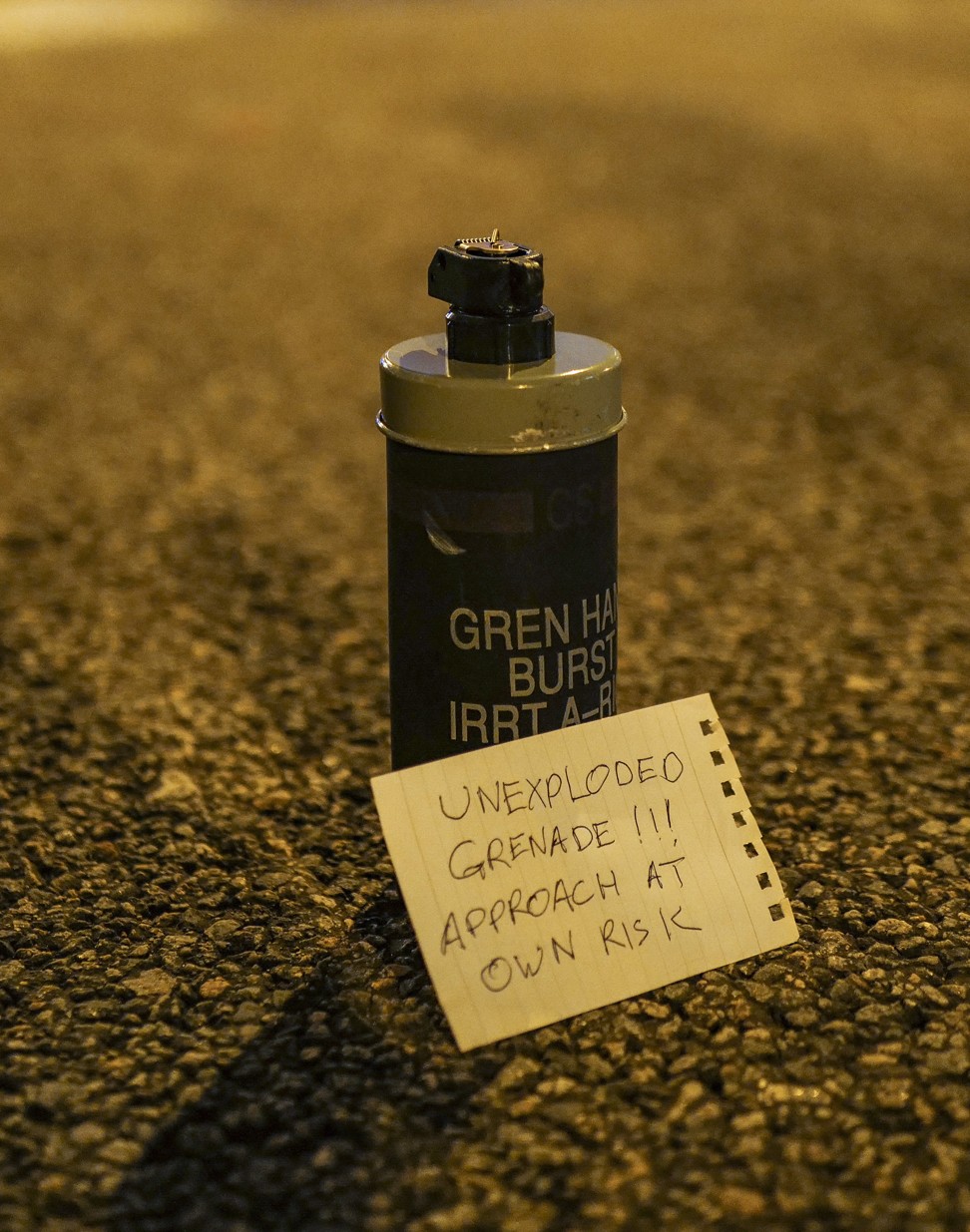
The issue was relayed by a British official in Nigeria who said: “A hostile mob was composed largely of women, and the local troops showed the greatest dislike in firing on the crowd when that course became inevitable.” Another administrator argued: “I must say that I should prefer to use tear gas on a mob rather than shoot at them. Tear gas does no harm but makes the mob look silly.”
By the mid-30s, the argument for “the humane weapon of choice” had been won, and tear gas was being used by British colonial forces in Palestine, South Africa and Ceylon (now Sri Lanka). Strikers and rioters in countries including Germany, Austria, Italy and France, also felt its effects.
By 1965, Britain had concocted what it boasted was an ideal modern form of tear gas, due praise for its “more pronounced and more extensive irritant effect”, the CS compound still in general use today. This was the start of a flourishing and lucrative export business to markets worldwide, sending canisters to countries and territories including Hong Kong, Indonesia, Kenya, Malaysia, Nigeria, Portugal, Singapore and Rhodesia (now Zimbabwe).

However, selling the weapon overseas and using it on home soil proved to be two very different propositions. In the 1969 Battle of the Bogside, in Derry, Northern Ireland, CS gas was used against British civilians for the first time, at the height of sectarian tensions. The Royal Ulster Constabulary fired more than 1,000 rounds into the Catholic area in an attempt to quell rioters, with one round falling into the bedroom of a 16-month-old baby and nearly choking him to death. The incident triggered moral panic and a public inquiry. The Battle of the Bogside remains one of only a handful of incidents in which tear gas has been used against civilians on British soil.
Instead, the British government has since been content to export the weapon to other countries and territories, including Hong Kong, despite former foreign secretary Jeremy Hunt’s announcement in June that Britain would “not issue any further export licences for crowd control equipment to Hong Kong unless we are satisfied that concerns raised on human rights and fundamental freedoms have been thoroughly addressed”.
But there is a catch. That decision does not apply to existing licences, such as the one issued in 2015 to companies including Chemring Defence, allowing exports to Hong Kong to flow uninterrupted until next year.
Rupert Pittman, director of corporate affairs for the Chemring Group, declined to say how much tear gas had been supplied to Hong Kong by Chemring Defence and the value of the business. He also refused to reveal the outcome of a review the company told The Guardian newspaper it was conducting into sales of tear gas to Hong Kong after it was used against unarmed protesters in the city in 2014.
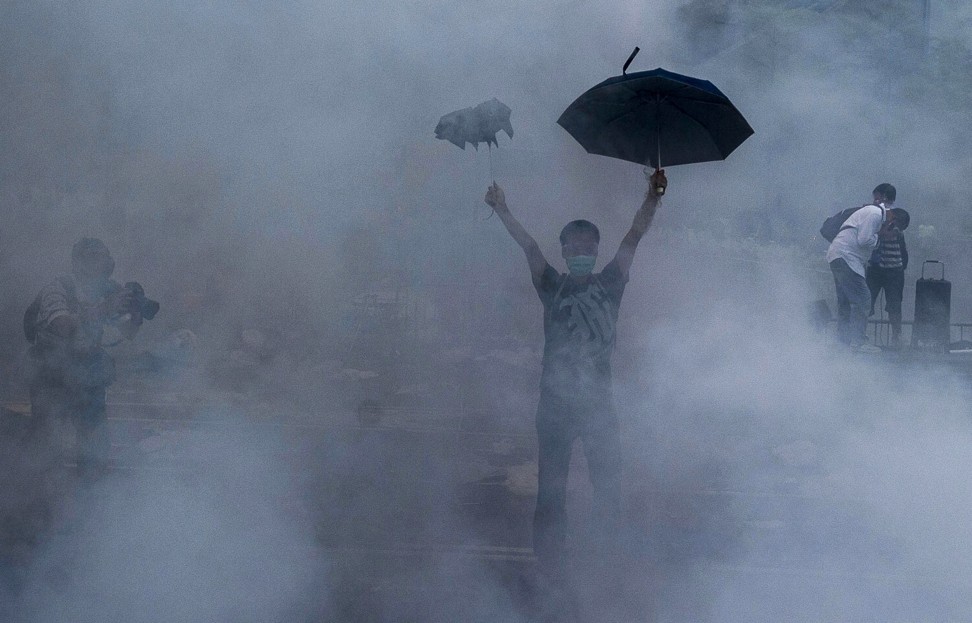
“The detail of how much product has been supplied to a customer is commercially sensitive and even if we still owned the business, I would not be able to share that with you,” Pittman said in an emailed response. “The sale of any of our products to a foreign nation requires an export licence which is granted by [the government], and the UK defence industry is one of the most highly regulated in the world, especially when it comes to exports.”
As things stand, Pittman, the Chemring Group, and the employees of PW Defence are under no obligation to account for how much tear gas they make, or sell to the Hong Kong Police Force or anyone else.
There is, as Feigenbaum points out, no standardised mechanism to account for how much tear gas is shipped, stored or used on either a national or international scale.
“Like other toxic products, tear gas must be clearly and systematically regulated and all trade publicly disclosed,” she writes. “For this to happen […] its legal status under the Chemical Weapons Convention must be clarified.”
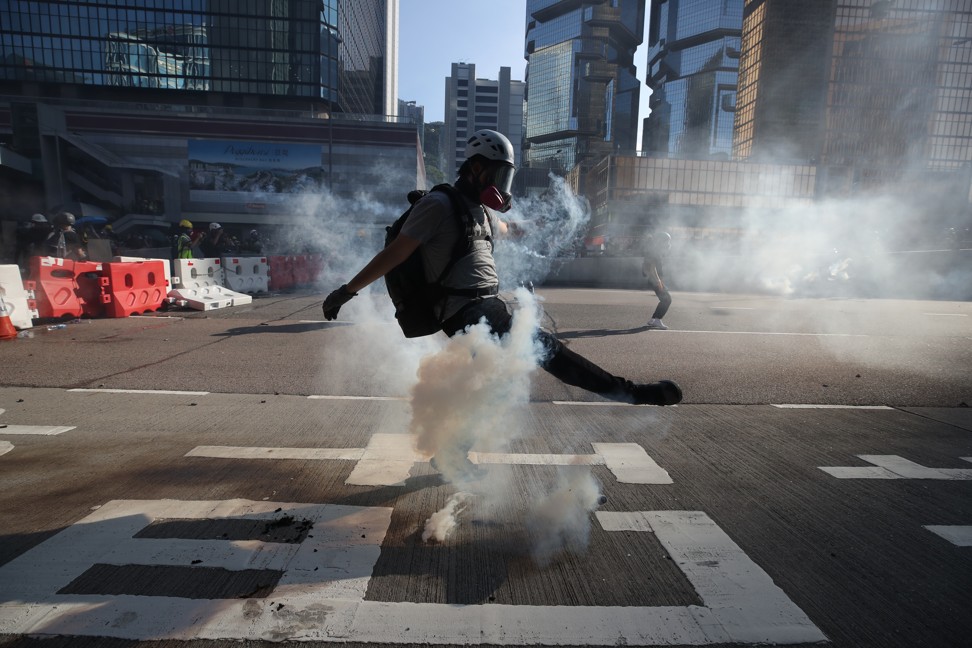
The traumatic fallout in Hong Kong and the now-routine firing of tear gas at protesters should spur an urgent re-examination of the chemical agent, she believes.
“There is this idea that there is a ‘safe’ dose,” says Feigenbaum. “The problem with that argument is, firstly, safe for who? The doses are measured in military trials using fit, able-bodied males […] Anyone who doesn’t have that body type can be very susceptible, so most of the deaths that come through the actual inhaling of tear gas are going to be babies, elderly people and people with pre-existing conditions.
“The second problem is that it presumes perfect, clinical conditions of use. But the reality of a protest is you have things like cordoned-off streets, you have other weapons being used at the same time. You have all this commotion going on, so that’s what often contributes to people getting hit by canisters in the torso or the head […] which is the other major way people die.”
Icarus Wong Ho-yin, co-founder of Hong Kong-based human-rights group the Civil Rights Observer, says he believes Hong Kong police could ultimately face civil action and personal injury lawsuits over their “excessive” use of tear gas in recent weeks.
Tear gas is prohibited by the Chemical Weapons Convention for use in warfare […] That is why police should only use tear gas as a last resort, especially when demonstrations are held in residential areasIcarus Wong, co-founder, Civil Rights Observer
“If you look at the historical background,” says Wong, “tear gas is prohibited by the Chemical Weapons Convention for use in warfare […] Tear gas is a chemical weapon […] That is why police should only use tear gas as a last resort, especially when demonstrations are held in residential areas.
“When [police forces give] training on the use of tear gas, one of the very basic principles is not to use it in indoor areas or in any area with poor ventilation. Even the weapon supplier guidelines clearly state tear gas can be used only in outdoor areas or areas with good ventilation.
“The Hong Kong Police Force has completely violated these guidelines.”
For Feigenbaum, the use of tear gas in Hong Kong touches on a far deeper and potentially more challenging societal question than simply whether a government should use a chemical weapon on its own restive citizens.
“If we are at the point where we have to poison a population to make it shut up, what has gone wrong in the democratic process?” she asks. “When we see this amount of tear gas being used on people who are, for the vast majority, non-violent and unarmed, it is usually because something has failed miserably within that process. That is the issue that should really be addressed, rather than what new kind of weapon we can suppress people’s voices with.” ■
What to do if you are tear gassed
CS gas, more commonly known as tear gas, is not actually a gas. It is a powder, like some aerosols. The defining component is a man-made cynocarbon compound called 2-chlorobenzalmalononitrile (also called o-chlorobenzylidene malononitrile.)
If you have a gas mask, or a mask and goggles, put them on. You may then be able to function in the gas.
If you have no protection, cover your mouth and nose with a handkerchief or cloth or use the inside of your coat to protect your airway (the outside of your jacket is likely to be contaminated).
Stand in the fresh air and allow the breeze to carry away the CS gas.
Try to get to high ground – most Riot Control Agents (RCAs) are heavier than air, so the highest concentrations tend to sit nearer to the ground.
Keeping your arms outstretched which will help CS gas to come off your clothing.
Remember that the gas will impregnate clothing for many months, so any clothing that may have been contaminated should be immediately washed several times or discarded.
Any exposed skin should be washed with soap and water. Shower first in cold water, then warm water. Do not bathe.
Do not rub your eyes or face, or this will reactivate any remaining crystals.
A tear gas timeline

1914: French troops fire grenades filled with methylbenzyl bromide into German trenches in August 1914 in the first recorded use of tear gas in warfare. The following April, Germans stage the first mass chlorine gas attack near Ypres, Belgium.
1925: the Geneva Protocol bans the use of chemical and biological weapons, including tear gas, in warfare.
1933: the British government approves the use of tear gas in Palestine in circumstances where the alternative is using firearms. The use of tear gas spreads through the former British colonies as administrators in Sierra Leone and Ceylon (now Sri Lanka) follow Palestine’s lead in requesting tear gas for crowd control.
1960s: US police and National Guard use tear gas on an unprecedented scale against anti-war and civil rights activists. In March 1965, US troopers fire tear gas and smoke and gas canisters into a crowd of about 500 black protesters marching for voting rights, in Selma, Alabama.
1969: tear gas is used by police in the Battle of the Bogside, in Derry, Northern Ireland, as sectarian violence explodes. It is the first time the weapon has been used against British civilians and leads to a public inquiry.
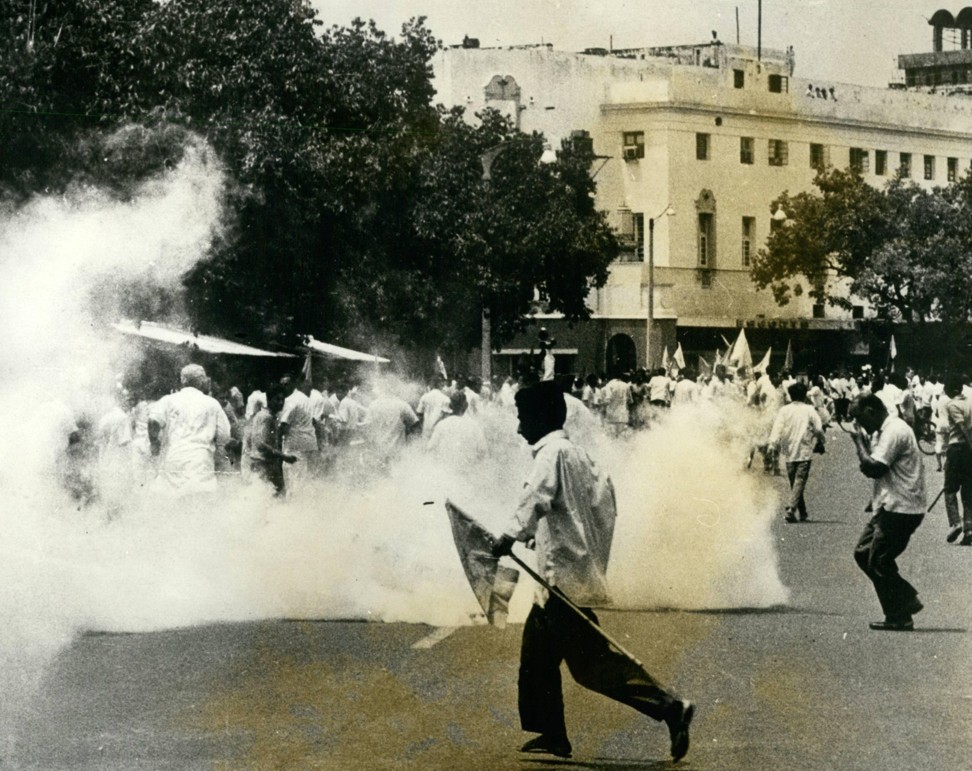
1993: more than 80 rounds of tear gas are fired into an enclosed compound at Waco, Texas, in an FBI assault to evict members of the Branch Davidian cult. The compound burned down during the raid killing cult leader David Koresh and 75 followers, including women and children.
2012: Physicians for Human Rights, a US-based non-profit organisation, documents 34 tear-gas-related deaths, including children and elderly people, during the Arab spring protests in Bahrain.
2013: hundreds of people are hospitalised with muscular, eye and head injuries as police fire 130,000 tear-gas canisters in the first 20 days of the Occupy Gezi protests in Turkey. One protester spends 25 days in a coma after being hit in the head with a tear-gas canister during a crackdown on demonstrators in Istanbul’s Taksim Square.
2014: tear gas is used against protesters in Ferguson, Missouri, during demonstrations lasting two months over the police shooting of Michael Brown. Protesters file a complaint against police after tear gas fired indiscriminately sparks panic and leaves a coffee shop filled with toxic smoke.
2014: Hong Kong police use tear gas against protesters taking part in the Occupy Central movement.
2019: tear gas is fired on an unprecedented scale in Hong Kong over a period of two months amid ongoing protests against the extradition bill.

